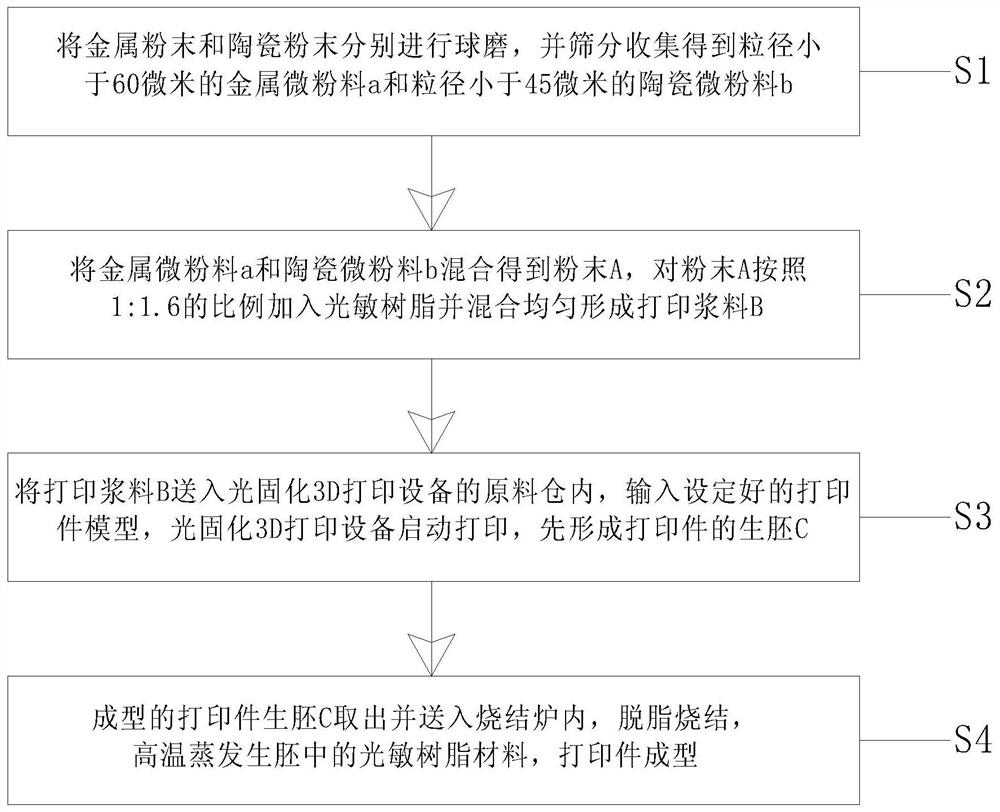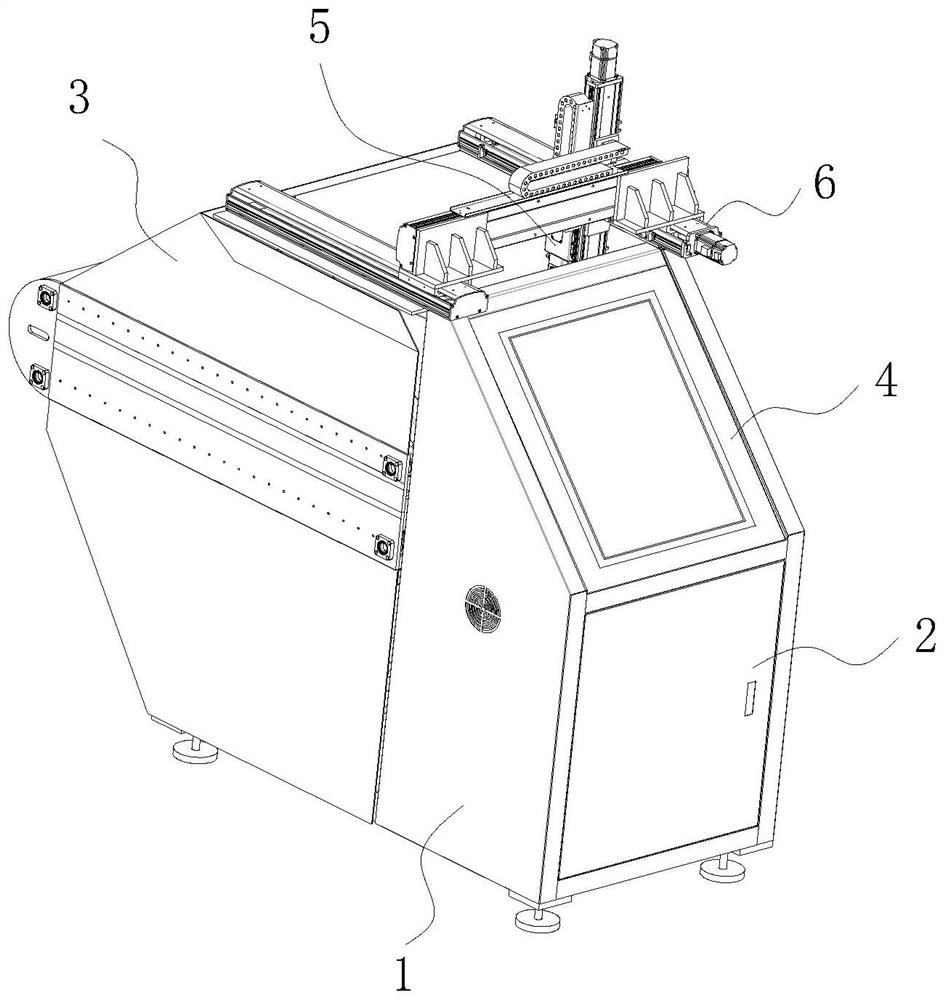3D printing method of metal ceramic composite material
A 3D printing and composite material technology, applied in the field of 3D printing of metal-ceramic composite materials, can solve problems such as difficult printing
- Summary
- Abstract
- Description
- Claims
- Application Information
AI Technical Summary
Problems solved by technology
Method used
Image
Examples
Embodiment 1
[0030] A 3D printing method for a metal-ceramic composite material, comprising the following steps:
[0031] S1. Ball milling the metal powder and the ceramic powder respectively, and sieving and collecting metal micropowder material a with a particle size of less than 60 microns and ceramic micropowder material b with a particle size of less than 45 microns;
[0032] S2, mixing 60 parts by weight of metal micropowder a and 40 parts by weight of ceramic micropowder b to obtain powder A, adding photosensitive resin to powder A according to the ratio of 1:1.6 and mixing uniformly to form printing paste B;
[0033] Among them, the photosensitive resin is formulated by 14% oligomer, 50% photoinitiator and 36% diluent;
[0034] S3. Send the printing slurry B into the raw material warehouse of the light-curing 3D printing device, input the set print model, the light-curing 3D printing device starts printing, and first form the green embryo C of the printed part;
[0035] S4. The fo...
Embodiment 2
[0041] A 3D printing method for a metal-ceramic composite material, comprising the following steps:
[0042] S1. Ball milling the metal powder and the ceramic powder respectively, and sieving and collecting metal micropowder material a with a particle size of less than 60 microns and ceramic micropowder material b with a particle size of less than 45 microns;
[0043] S2, mixing 65 parts by weight of metal micropowder a and 35 parts by weight of ceramic micropowder b to obtain powder A, adding photosensitive resin to powder A according to the ratio of 1:1.6 and mixing uniformly to form printing paste B;
[0044] Among them, the photosensitive resin is formulated from 16% oligomer, 54% photoinitiator and 30% diluent;
[0045] S3. Send the printing slurry B into the raw material warehouse of the light-curing 3D printing device, input the set print model, the light-curing 3D printing device starts printing, and first form the green embryo C of the printed part;
[0046] S4. The ...
Embodiment 3
[0052] A 3D printing method for a metal-ceramic composite material, comprising the following steps:
[0053] S1. Ball milling the metal powder and the ceramic powder respectively, and sieving and collecting metal micropowder material a with a particle size of less than 60 microns and ceramic micropowder material b with a particle size of less than 45 microns;
[0054]S2. Mix 70 parts by weight of metal micropowder a and 30 parts by weight of ceramic micropowder b to obtain powder A, add photosensitive resin to powder A according to the ratio of 1:1.6 and mix uniformly to form printing paste B;
[0055] Among them, the photosensitive resin is formulated by 18% oligomer, 60% photoinitiator and 22% diluent;
[0056] S3. Send the printing slurry B into the raw material warehouse of the light-curing 3D printing device, input the set print model, the light-curing 3D printing device starts printing, and first form the green embryo C of the printed part;
[0057] S4. The formed green...
PUM
| Property | Measurement | Unit |
|---|---|---|
| particle diameter | aaaaa | aaaaa |
| particle diameter | aaaaa | aaaaa |
Abstract
Description
Claims
Application Information
 Login to View More
Login to View More - R&D Engineer
- R&D Manager
- IP Professional
- Industry Leading Data Capabilities
- Powerful AI technology
- Patent DNA Extraction
Browse by: Latest US Patents, China's latest patents, Technical Efficacy Thesaurus, Application Domain, Technology Topic, Popular Technical Reports.
© 2024 PatSnap. All rights reserved.Legal|Privacy policy|Modern Slavery Act Transparency Statement|Sitemap|About US| Contact US: help@patsnap.com









